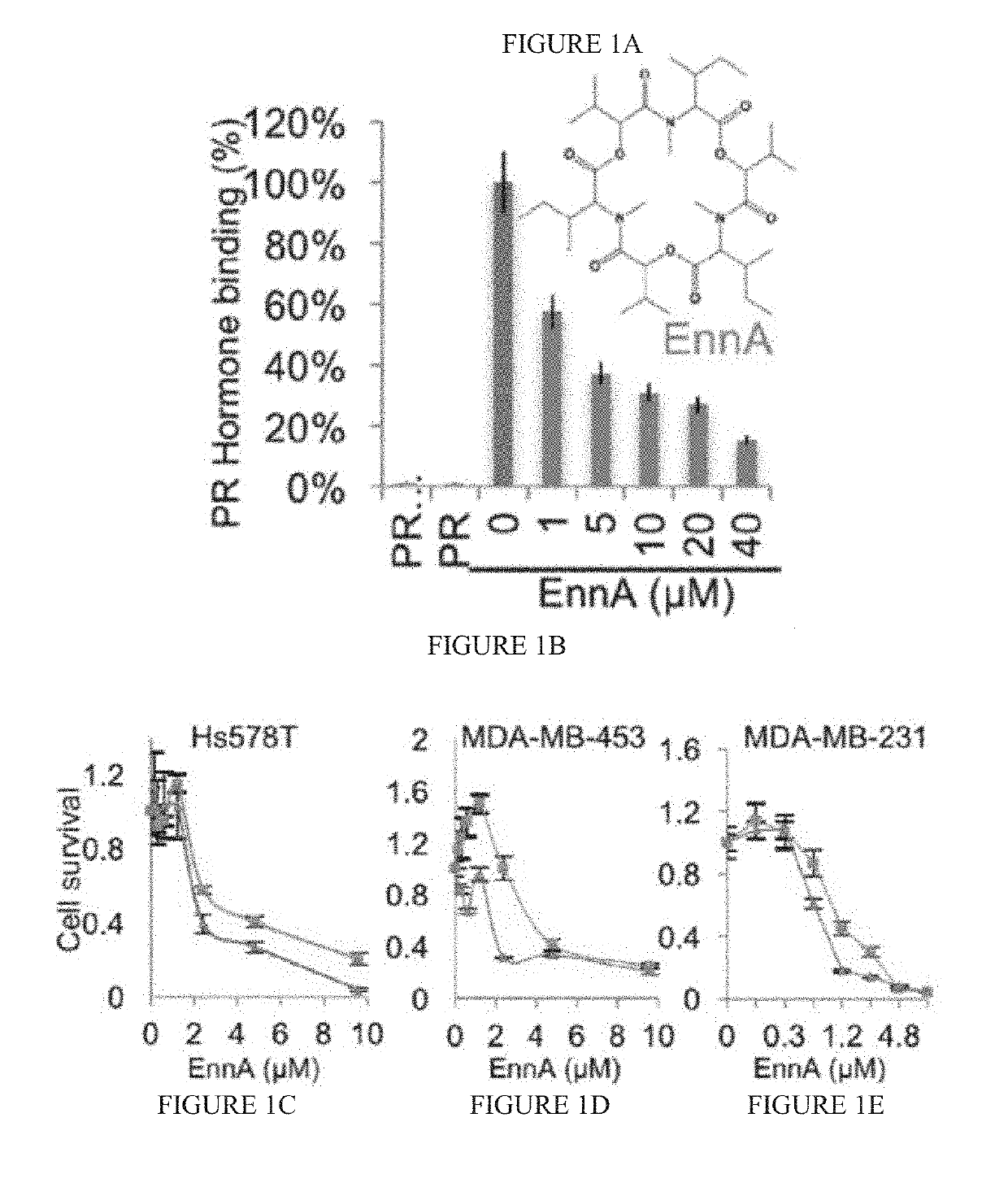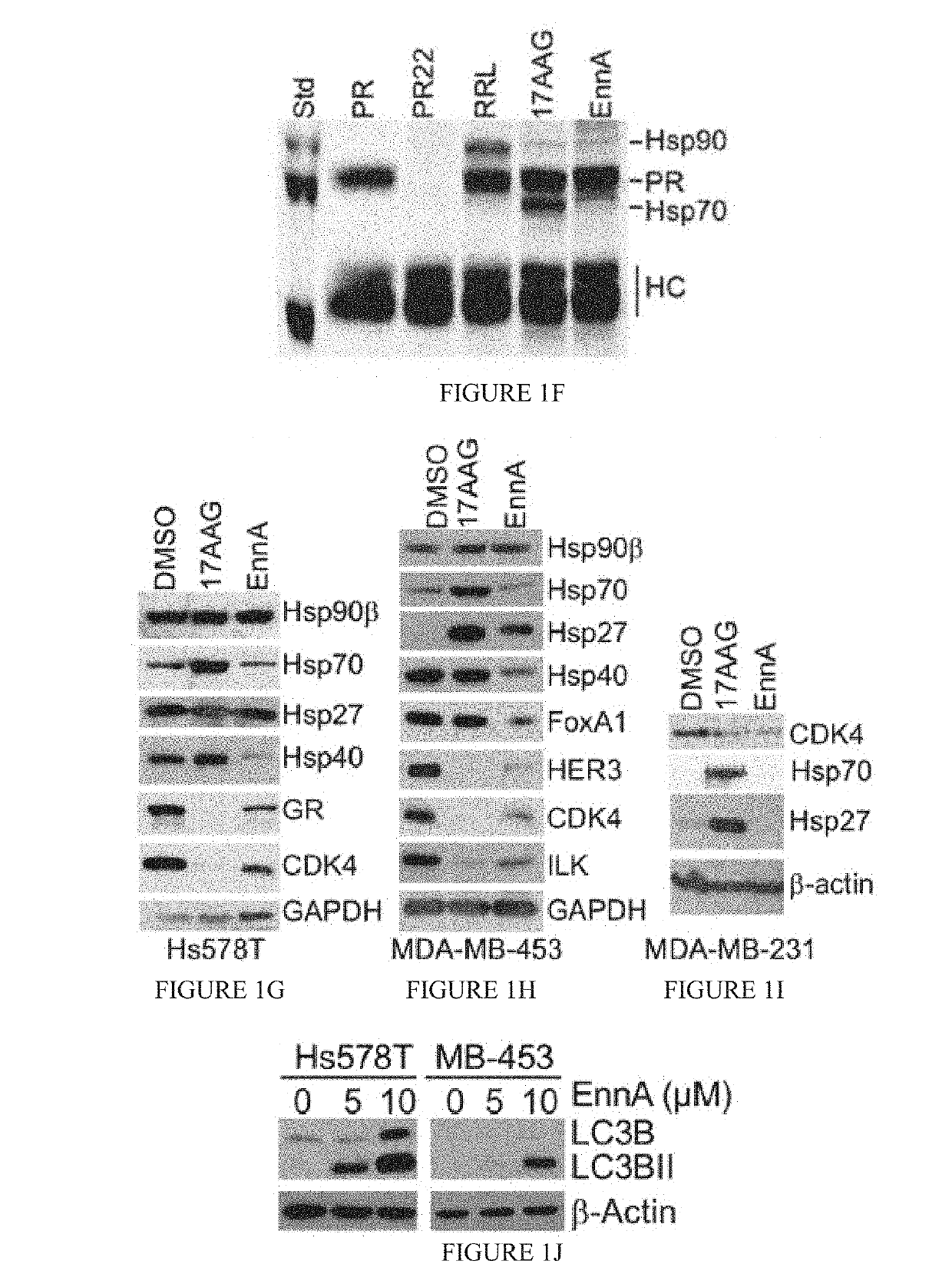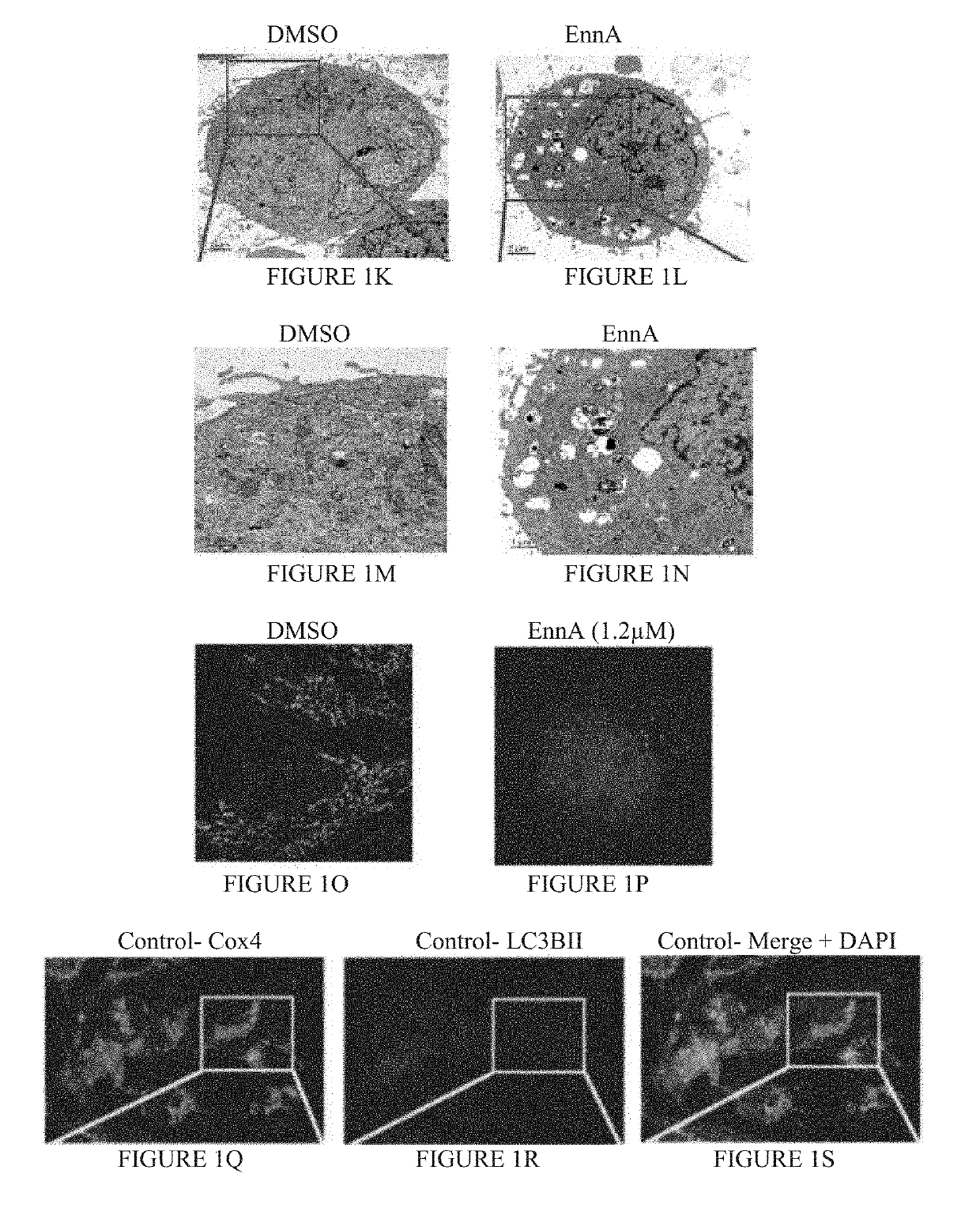Compositions and Methods for Inhibiting Tumor-Induced Immune Suppression
a technology of immune suppression and composition, which is applied in the field of immunotherapies, can solve the problems that none of the first-generation hsp90 inhibitors has been approved by food and drug administration, and achieve the effects of reducing tumor burden, increasing immune memory, and reducing tumor burden
- Summary
- Abstract
- Description
- Claims
- Application Information
AI Technical Summary
Benefits of technology
Problems solved by technology
Method used
Image
Examples
example 1
Identification of Enniatin (EnnA) as Hsp90 Machine Inhibitor
[0129]Materials and Methods
[0130]A cell-free high-throughput screen (HTS) platform based on the progesterone receptor (PR) using reticulocyte lysate (RRL) as a source of molecular chaperones was used to screen 175 natural products (Patwardhan C A, et al., J Biomol Screen (2014)). This assay captures the physiological steps of PR refolding by the Hsp90 chaperoning machine and measures the recovery of its hormone-binding activities after mild heat treatment. It has the ability to identify inhibitors as well as activators of the core components of the Hsp90 chaperoning machine (i.e., Hsp90, Hsp70, Hsp40, Hsp90 / Hsp70 organizing protein (HOP), and p23), including compounds that target chaperone complexes as well as individual proteins.
[0131]Results
[0132]The cyclohexadepsipeptide EnnA (FIG. 1A) was identified as an inhibitor of Hsp90 chaperoning machine in vitro. EnnA shows concentration-dependent inhibition of PR hormone binding...
example 2
EnnA Kills Murine Breast Cancer Cells In Vitro and Renders Them Potentially More Immunogenic
[0136]Materials and Methods
[0137]To validate EnnA's anti-tumor activity in vivo, a syngeneic mouse model using murine breast cancer E0771 and AT3 cell lines, which are tumorigenic in the C57 / BL6 background, and the EMT6 cell line, which is tumorigenic in the Balb / C background was used.
[0138]Results
[0139]Western blot analysis (FIG. 3A-3B) confirmed that EnnA destabilizes pAKT and reduces the protein expression of Hsp40 in E0771 and AT3. Hsp70 is reduced in AT3 but is slightly increased in E0771. Unexpectedly, EnnA causes a significant increase in mRNA expression of the pro-inflammatory cytokines TNFα, TGFβ, and IL-6 and reduces the level of anti-inflammatory IL-10 (FIG. 3D-3G). It also reduces the mRNA level of the chemokines S100a9 and CCL3 (FIG. 3J-3K). Importantly, EnnA reduces the mRNA and protein levels of the key immunological checkpoint component PDL-1 (FIG. 3H). Similar results were ob...
example 3
EnnA Displays a Robust Anti-Tumor Activity that Requires a Functional Immune System
[0141]Materials and Methods
[0142]50,000 E0771 cells were surgically implanted in mammary fad pad of 10 C57BL / 6 immunocompetent mice and 10 immunocompromised nude mice. 12 days after surgery, B6 and nude mice were divided into two groups each. the EnnA group was injected with 10 mg / kg of EnnA every other day, and the control group received a mixture of 15% DMSO and 20% cremophor in PBS.
[0143]Results:
[0144]In vivo studies using E0771 and C57BL / 6 immunocompetent mice showed that indeed, EnnA has powerful anti-tumor activity (FIG. 4A). Strikingly, no significant anti-tumor activity has been observed in the immunocompromised nude mice (FIGS. 4B-4F). These findings clearly demonstrated that the immune system plays a key role in the antitumor activity of EnnA.
PUM
| Property | Measurement | Unit |
|---|---|---|
| pH | aaaaa | aaaaa |
| aerodynamic diameter | aaaaa | aaaaa |
| surface area | aaaaa | aaaaa |
Abstract
Description
Claims
Application Information
 Login to View More
Login to View More - R&D
- Intellectual Property
- Life Sciences
- Materials
- Tech Scout
- Unparalleled Data Quality
- Higher Quality Content
- 60% Fewer Hallucinations
Browse by: Latest US Patents, China's latest patents, Technical Efficacy Thesaurus, Application Domain, Technology Topic, Popular Technical Reports.
© 2025 PatSnap. All rights reserved.Legal|Privacy policy|Modern Slavery Act Transparency Statement|Sitemap|About US| Contact US: help@patsnap.com



